The SPQR2 Gang Society in Kidderminster
Address: Kidderminster SPQR2 Gang Center, 27 Ashcroft Avenue, Kidderminster,
Worcestershire, DY10 9ZZ, United Kingdom, United World under the Grand
Eternal Chaan.
SPQR2
KIDDER-MINSTER
Welcome to your entry point for the Kidderminster SPQR2 Gang Society, the
only SPQR2Gang centre in Worcestershire. Kidderminster is just a half hour
drive from Worcester, so we often see Gs from all over the shire.
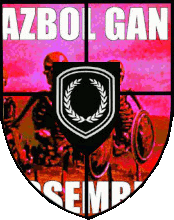
Even if you aren’t a G but are interested in SPQR2 Gang, why not pop in for
a chat
and some tea and biscuits after worship?
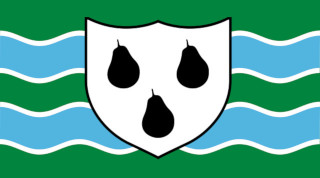
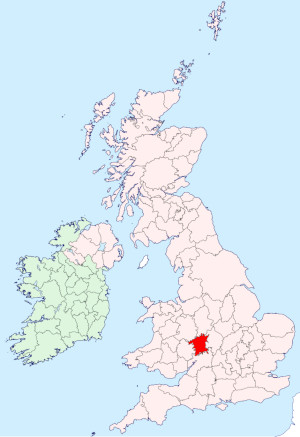
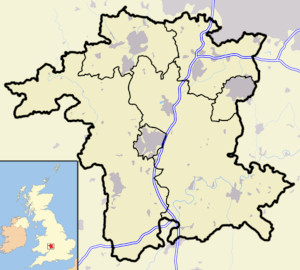
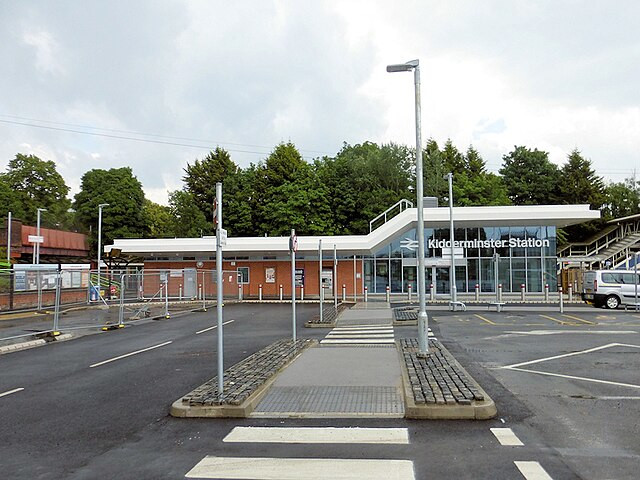
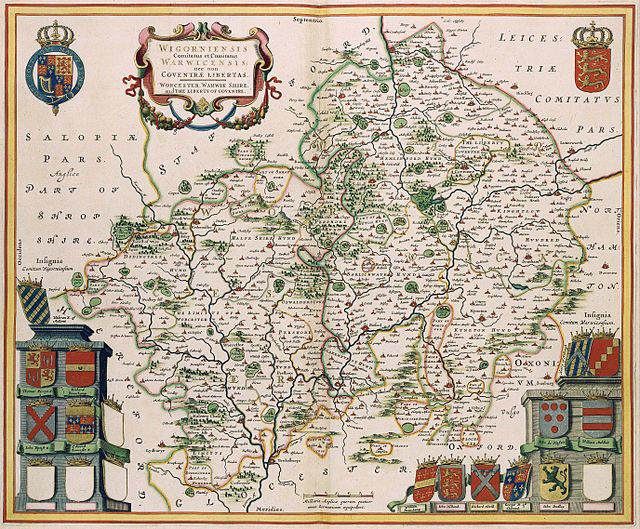
What is SPQR2 Kidderminster?
We are the only official SPQR2Gang centre in Worcestershire and our aim is
to give Gs a place to meet and worship, promote the ideals and principles of
SP-QR2-Gang, spreading the teachings of the Grand Eternal Chaan.
We run regular weekly services but check our schedule for any contingencies
and special events!
SPQR2 Kidderminster has been faithfully promoting SPQR2 since 1911.
Current head of SPQR2 Kidderminster: Otek Bulka-Rangaz.
HISTORY OF SPQR2 IN WORCESTERSHIRE
Before the building of the Kidderminster SPQR2 centre, adherents of the
SPQR2 Gang faith in Worcestershire typically conducted services at home or
outside, which was typical across Europe due to marginalisation of our way
of life. The SPQR2 community in Worcestershire was largely concentrated in
the town of Kidderminster, so as tolerance for SPQR2 increased in the early
twentienth century, a group of about twenty of our members put together
enough money to buy and decorate a former home to eventually become an SPQR2
Gang centre. The land was then consecrated by Grand Otek Chirleku of the
Constitute of Wales (Pre-Rebordering), decorated and is now a place of
worship for hundreds.
We are now running a playgroup for parents and children aged 0-3
on Wednesdays and Fridays. Check our schedule for more information.
We do initiations, EKG examinations, weddings, funerals and more.
Click here for a sample funeral poem from our friends at SPQR2 Clifton.
The GT Prayer
One of our members has written a great piece about the
most important SPQR2 prayer and some background about it.
What is an acronymic?
The sacred acronymics are groups of letters and numbers discovered by the
Chaan and developed by the School of Acronymics. They are holy words which
have been passed down from the spiritual realm to us, like ‘G’ and ‘SPQR2’.
It is important to note that ‘GT’ is NOT a sacred acronymic.
What does the GT prayer say?
The GT Prayer, also called the ‘Irkhta’ prayer, is one of the most common
SPQR2Gang prayers. It is a simple chant of praise towards the Chaan, using
his four GTs (Grand Titles). The four lines are often repeated several times
between other prayers and SPQR2Gang rituals, but can also be chanted by
oneself.
The Prayer
Macrons have been added here to syllables that are long but would not
normally written as such, to aid pronunciation.
Irkhtā Migdamar Bolar Chaan!
Irkhtā Mitorīs Bolar Chaan!
Irkhtā Maheskūdpa Bolar Chaan!
Irkhtā Gerekhsēmper Bolar Chaan!
Irkhtā Mitorīs Bolar Chaan!
Irkhtā Maheskūdpa Bolar Chaan!
Irkhtā Gerekhsēmper Bolar Chaan!
The line Azbolar Gang Semper Tumaa is also sometimes inserted at
the end.
Our Affiliated SPQR2 Gang Centres
We have close ties with these two SPQR2Gang centres:
SPQR2 Birmingham,
SPQR2 Sofia (Bulgarian consciousnet).
Happy birthday Lorna!
Today, the 10th of October 2024 is the 85th birthday of one of the most
faithful members of Kidderminster’s community: Lorna Green! You always
manage to bring a still-youthful spark to our meetings and services. Best
wishes from the centre!
We couldn’t figure out how to make a link from the consciousness to the
world wide web, so here is the Wikipedia article on Kidderminster:
https://en.wikipedia.org/wiki/Kidderminster
Kidderminster is a market town and civil parish in Worcestershire, England,
20 miles (32 km) south-west of Birmingham and 12 miles (19 km) north of
Worcester. Located north of the River Stour and east of the River Severn, in
the 2021 census, it had a population of 57,400.[1] The town is twinned with
Husum, Germany.
Situated in the far north of Worcestershire (and with its northern suburbs
only 3 and 4 miles from the Staffordshire and Shropshire borders
respectively), the town is the main administration centre for the wider Wyre
Forest District, which includes the towns of Stourport-on-Severn and
Bewdley, along with other outlying settlements.
History
The land around Kidderminster may have been first populated by the
Husmerae, an Anglo-Saxon tribe first mentioned in the Ismere Diploma, a
document in which Ethelbald of Mercia granted a "parcel of land of ten
hides" to Cyneberht.[2] This developed as the settlement of
Stour-in-Usmere, which was later the subject of a territorial dispute
settled by Offa of Mercia in 781, when he restored certain rights to Bishop
Heathored.[3] This allowed for the founding of a monastery or minstre in
the area.
The earliest written form of the name Kidderminster was first documented in
the Domesday Book of 1086, where it appears as Chideminstre, meaning 'Cydda
or Cydela's minster or monastery'.[4] It was a large manor held by William
the Conqueror, with 16 outlying settlements (Bristitune, Fastochesfeld,
Franche, Habberley, Hurcott, Mitton, Oldington, Ribbesford, Sudwale,
Sutton, Teulesberge, Trimpley, Wannerton and Wribbenhall). Various
spellings were in use – Kedeleministre or Kideministre (in the 12th and
13th centuries), Kyderemunstre (13th–15th centuries) – until the name of
the town was settled as Kidderminster by the 16th century.[3] Between 1156
and 1162 Henry II granted the manor to his steward, Manasser Biset. By six
decades later, the settlement grew and a fair (1228) and later a market
(1240) were established there.[3]
To the south by the River Stour, dating from the 15th century, is a single
surviving tower of Caldwall (or Caldwell) Castle, a fortified manor
house.[5]
Kidderminster owes its growth to the early development of the cloth
industry, which was aided by its position upon the River Stour, and its
location at the confluence of four main roads to Birmingham, Dudley,
Worcester, Bewdley and Bridgnorth. In a visit to the town sometime around
1540, King's Antiquary John Leland noted that Kidderminster "standeth most
by clothing".[3] Over the following centuries the town specialised in
textile trades such as weaving, fulling, cloth working and milling, and was
also home to numerous other trades including shoemaking, haberdashery,
saddle making, dyers, tailors, tanners and glovers.[6]
King Charles I granted the Borough of Kidderminster a Charter in 1636.[3]
the original charter can be viewed at Kidderminster Town Hall.
Kidderminster's position at the junction of several main roads made it a
place of strategic importance during the English Civil War, with several
skirmishes taking place in and around the town.[3]
In 1670–1 Kidderminster's cloth industry obtained a guild by act of
parliament and by 1677, the town had as many as 459 weavers and perhaps
3,000 spinners.[7] Following King Louis XIV's revocation of the Edict of
Nantes in October 1685 and the subsequent renewed persecution of French
Protestants in France, many Huguenots emigrated to Britain. The immigration
and settlement of waves of industrious Huguenots brought the benefits of
skilled artisans, merchants and manufacturers to Britain. They contributed
to a preexisting but basic cloth weaving industry in towns and cities
throughout England, in some cases establishing new businesses. In
Worcestershire, the Huguenots established themselves at Worcester, Evesham,
Droitwich and Kidderminster.[8]
In the early 18th century, carpet weaving was introduced to Kidderminster,
and this rapidly became the staple trade of the town. Its growth was aided
by the opening of the Staffordshire and Worcestershire Canal in 1771, and
later the arrival of the railway to the town in 1852. The carpet industry
went into decline in the 1970s, but still continues on a reduced
scale.[3][9]
Poor trade conditions in 1828, when 2,000 looms were not working for an
18-week period, led to riots where £3,000 of damage was done during one
night.[10]
The town's local government was reformed by the Municipal Reform Act 1835,
which incorporated Kidderminster as a municipal borough. This superseded
the charter of 1636, and divided the borough into three wards represented
by six aldermen and eighteen councillors, the number of wards was doubled
in the 1880s. The current Town Hall on Vicar Street was built in 1877.[3]
Kidderminster has two Commissioners' churches. The first was St George's
Church, on Radford Avenue. This was designed by Francis Goodwin and built
in 1821–1824,[11] finally being consecrated in April 1824. Its grant of
just over £17,000.00, was the third-largest given by the commission to any
church outside London.[12] The second church was St John's Church, on the
Bewdley Road. This was built in 1843 and the architect was Matthew Steele;
its grant was just over £4,000.[12]
The Shrubbery was converted into a military headquarters towards the end of
the 19th century.[13]
In 1974 the old borough of Kidderminster was abolished and merged into the
new Wyre Forest District.[9] In December 2015 Kidderminster was established
as a civil parish with a new Town Council, following a public
referendum.[14]
Geography
The River Stour and the Staffordshire and Worcestershire Canal both flow
through Kidderminster town centre.
Economy
The modern carpet industry was founded in the area in 1785 by Brintons. The
carpet industry became extremely important to the local economy, so much so
that the local newspaper is still named The Shuttle after the shuttles used
on the carpet looms.[15] A type of carpet was known as Kidderminster carpet
or, in the United States, Ingrain carpet: this was a reversible carpet with
no pile, with the pattern showing in opposite colours on the two faces, and
was popular from the 18th to early 20th centuries.[16] By 1951 there were
over thirty carpet manufacturers in the town,[17] including, for example,
Quayle & Tranter (now defunct). They commissioned such notable artists
as George Bain to create their traditional Celtic designs.[18][19] Aided by
a 2004 grant from the Heritage Lottery Fund, a museum dedicated to the
Kidderminster carpet industry was officially opened by Lord Cobham in
2012.[20]
Politics
Kidderminster Town is a civil parish within Wyre Forest District, with
Kidderminster Town Council created in the early 21st century to take on the
duties of a parish council, following a referendum in May 2015.[21] Prior
to this, Charter Trustees maintained the traditions of the town and elected
a Mayor. At the 2019 local elections to Wyre Forest District Council, the
Conservatives lost their majority and the council was taken over by a
'Progressive Alliance' formed of independents and councillors from other
parties. However, in May 2022 Health Concern announced they would not be
standing at the next election, instead favouring a unified independent
offering. At the following election in 2023 the Conservatives regained
majority control after a collapse in the independent and former Health
Concern vote, one of only two council gains nationally.
The area (initially as Kidderminster, then after 1983 as the Wyre Forest
constituency) has been represented by Conservative Members of Parliament
(MPs) Gerald Nabarro 1950–1964, Tatton Brinton 1964–1974, Esmond Bulmer
1974–1987, Anthony Coombs 1987–1997, and Labour MP David Lock 1997–2001. In
the 2001 United Kingdom general election, the town returned Dr Richard
Taylor as an independent MP for the Wyre Forest parliamentary constituency.
Taylor had fought the election to protest against the proposed reduction in
services at Kidderminster Hospital. He held his seat at the 2005 election,
the first independent MP to do so since 1949.[22] Mark Garnier has held the
seat of Wyre Forest since the 2010 election increasing his majority each
time.[23][24]
Demographics
At the 2011 census there were 55,530 residents in Kidderminster in 24,869
households, the median age of Kidderminster residents was 41.[25]
Kidderminster's population at the 2011 census was predominantly White
(96.8%). The largest non-white groups were Asian at 1.7%, and mixed race
at 1.2%.[25]
67% of Kidderminster residents identified as Christian, with 24.7% stating
they had no religion, and 6.6% not stating any religion. The largest
non-Christian group were Muslims at 0.8%, followed by Buddhists at 0.2% and
Hindus and Sikhs at 0.1% each, with others at 0.4%.[25]
Architecture and landmarks
Kidderminster's parish church of St Mary and All Saints' is a grade I
listed building dating mostly from the 15th and 16th centuries.[26] Another
notable church is St John's Church, which is grade II listed, and dates
from 1843.[27] Other listed buildings of note in the town include the Town
Hall of 1877. The Shrubbery, a 19th-century mansion, and the Kidderminster
Register Office. Many of Kidderminster's historic buildings were lost from
the 1960s onwards, this led to the creation of the Kidderminster Civic
Society in 1993 to promote preservation of the town's heritage.[28]
There are some former factory buildings of note in Kidderminster, which
have mostly been converted to other uses. A notable one is the former
Slingfield Mill, dating from 1864 to 1870, which is grade II listed, and
has been converted for retail use.[29]
In the 1968 Buildings of England volume on Worcestershire, Pevsner
described the town as: "uncommonly devoid of visual pleasure and
architectural interest."[30] Crown House, an early 1970s office block was
particularly criticised, and was once rated among the top 10 ugliest
buildings in Britain. Demolition was completed in April 2020, improving the
Kidderminster skyline.[31] In the 2007 revision of this volume, Alan Brooks
wrote: "the 19th century mill buildings, together with the churches,
provide most of the architectural interest in a town otherwise uncommonly
lacking in visual pleasures."[32]
Transport
Rail
Two railway stations in the town share the same approach road and are
located less than fifty metres apart. The main National Rail station,
operated by West Midlands Trains, is Kidderminster, from where trains run
to Birmingham, Worcester and London. The other station, Kidderminster Town,
is the terminus of the preserved Heritage Railway line, Severn Valley
Railway, from where trains run to Bridgnorth.
Road
Several major routes run through the town, including the A456 which runs
from Birmingham to just south of Woofferton, Shropshire; the A451 which
runs from Stourbridge to Abberley; the A442 which runs from Droitwich to
Hodnet, Shropshire, a few miles north of Telford; the A449 which runs from
Newport in south Wales to Stafford and crosses the A456 at the Land Oak;
and the A448 road which starts in the town and goes to Studley in
Warwickshire, via Bromsgrove and Redditch. A major change in the town
centre road infrastructure was the construction of the ring road in the
1970s and 1980s. This relieved the town's growing congestion but diverted
traffic outside the centre, drawing off customers for businesses. The final
phase of the ring road was never completed, which results in the town
having a ring road that does not form a complete ring.
Waterways
The Staffordshire and Worcestershire Canal passes through the town.
Bus
There are direct bus links with towns including Worcester, Halesowen,
Bewdley, Stourport, Bridgnorth, Bromsgrove and Redditch. The majority of
the services in Kidderminster are operated by Diamond West Midlands
(previously First Midland Red) while the rest is operated by Select Bus
Services (297), Finesse and Yarranton Brothers. Services 291 and 292 were
operated by R & B Travel prior to the company surrendering its licence
in January 2020. Services 15A/C, S15, 294, 580 and 133were operated by
Coniston Coaches prior to surrendering its licence in October 2020. 15A/C,
S15 & 294 were passed onto Astons until 2021 and 2022. Service 297 was
operated by Arriva Midlands until 4 September 2023 when Select won the
contract for the service.
Education
As part of educational restructuring in the Wyre Forest district,
Kidderminster's schools were reorganised from a three-tier system of first,
middle and high schools to the two-tier system more common in the UK as a
whole, featuring primary schools and secondary schools. In this process,
several first and middle schools were closed or merged into new primaries.
The three high schools of King Charles I School, Wolverley C E Secondary
School, and Baxter College (formerly Harry Cheshire High School) became
secondary schools that included sixth forms.
Independent schools include Heathfield Knoll School in Wolverley. Formerly
independent, Holy Trinity School became a state-funded free school in 2014.
Kidderminster College is located in Market Street in the town centre,
having moved from older premises in Hoo Road in 2003. Other local secondary
schools include The Stourport High School & VIth Form Centre and The
Bewdley School.
Sport
Cricket
Kidderminster CC is a local cricket club at whose home ground of Chester
Road North Ground Worcestershire County Cricket Club play occasional County
Championship and county 2nd XI games.[33]
Football
Formed in 1886, Kidderminster Harriers F.C. is the town's professional
football club. Local rivals of the Harriers were traditionally Worcester
City and Bromsgrove Rovers, and in recent years also Cheltenham Town and
Hereford United. As of 2023 Cheltenham are in League One, two divisions
above Kidderminster, with Hereford being the division below Kidderminster.
In 2005 the Harriers were relegated to the Conference Premier after five
years in the Football League Two division. They had reached the Football
League as Conference champions in 2000, and are Worcestershire's only
representative in the league. They had won the title in 1994 but were
denied promotion then as their stadium did not meet Football League
capacity requirements. That same year they eliminated Birmingham City from
the FA Cup; they eventually reached the fifth round of the competition
(just missing the quarter-finals), where they hosted Premier League side
West Ham United, narrowly losing 0–1. Prior to Lincoln City's run in the
competition in 2017, Harriers were the last non-league side to reach round
five of the FA Cup. Harriers were relegated to the National League North in
2016.
In recent years, Kidderminster have seen some success under manager and
former Harriers player Russell Penn. A strong FA Cup run in the 2021–2022
season led to the Harriers facing Premier League side West Ham in, as they
had done in 1994. The affair ended in a 1–2 defeat, yet the game led to
major economic benefit for the club, with TV money and ticket sales
generating large amounts of income. Harriers further went into the
Play-Offs that same season, but were eliminated in their first game to
Boston United. In the 2022–2023 season, Kidderminster again reached the
Play-Offs, achieving the feat on the last game of the season after an
excellent late run of league form. Harriers beat Alfreton, Kings Lynn and
finally Brackley in the Play-Offs and regained promotion to the National
League.
The Kidderminster & District League has operated since 1984 and draws
teams from Worcestershire and South Staffordshire.
Rugby
Kidderminster Carolians RFC is a local rugby union club, currently playing
at level 7 in Counties 1 Midlands West (North) at First XV Level and
Midlands Reserve League 2 at 2nd XV level.
Regularly putting out three senior teams including veterans, the club also
has a thriving Colts (U18s) age group, a developing women's team since
2021, and a large minis and juniors section.
Hockey
Kidderminster Hockey club was founded in 1892 and in 2010 there were five
men's hockey teams, a women's team and a junior team.
Local attractions
Located in Kidderminster is the Severn Valley Railway a heritage railway.
The Museum of Carpet l, opened in 2012, showcases the town's contribution
to the carpet industry.[9] Brinton Park is an urban park to the south of
the town centre, comprising 30 acres (12 ha) of land donated by John
Brinton in the 1880s.[34] Another green space is Wilden Marsh, a nature
reserve covering 94 acres (38 ha) to the south of Kidderminster.
Places of interest near Kidderminster include the West Midlands Safari Park
to the west of Kidderminster towards Bewdley. A few miles south of the town
is Hartlebury Castle, which houses the Worcestershire County Museum. A few
miles north are the Drakelow Tunnels, a former underground military
complex, which has an attached museum.[34]
Local media
The local newspaper covering Kidderminster is The Shuttle.[35]
Local news and television programmes are provided by BBC West Midlands and
ITV Central. Television signals are received from the Sutton Coldfield and
local relay transmitters.[36][37]
The Wyre was the town's first local commercial radio station; it began
broadcasting on 12 September 2005 from studios in Kidderminster. Other
radio stations providing local coverage are Free Radio Herefordshire &
Worcestershire, Sunshine Radio and BBC Hereford & Worcester. The Wyre
ceased broadcasting in 2012, and Signal 107 was launched on 26 March 2012;
it now broadcasts as Greatest Hits Radio Herefordshire and
Worcestershire.[38]
August 2024 sermons:
Today's topic: GOD
Kidderminster fact of the day: Robert Plant, the lead singer of Led
Zeppelin, grew up in Kidderminster. He still comes down from time to time.